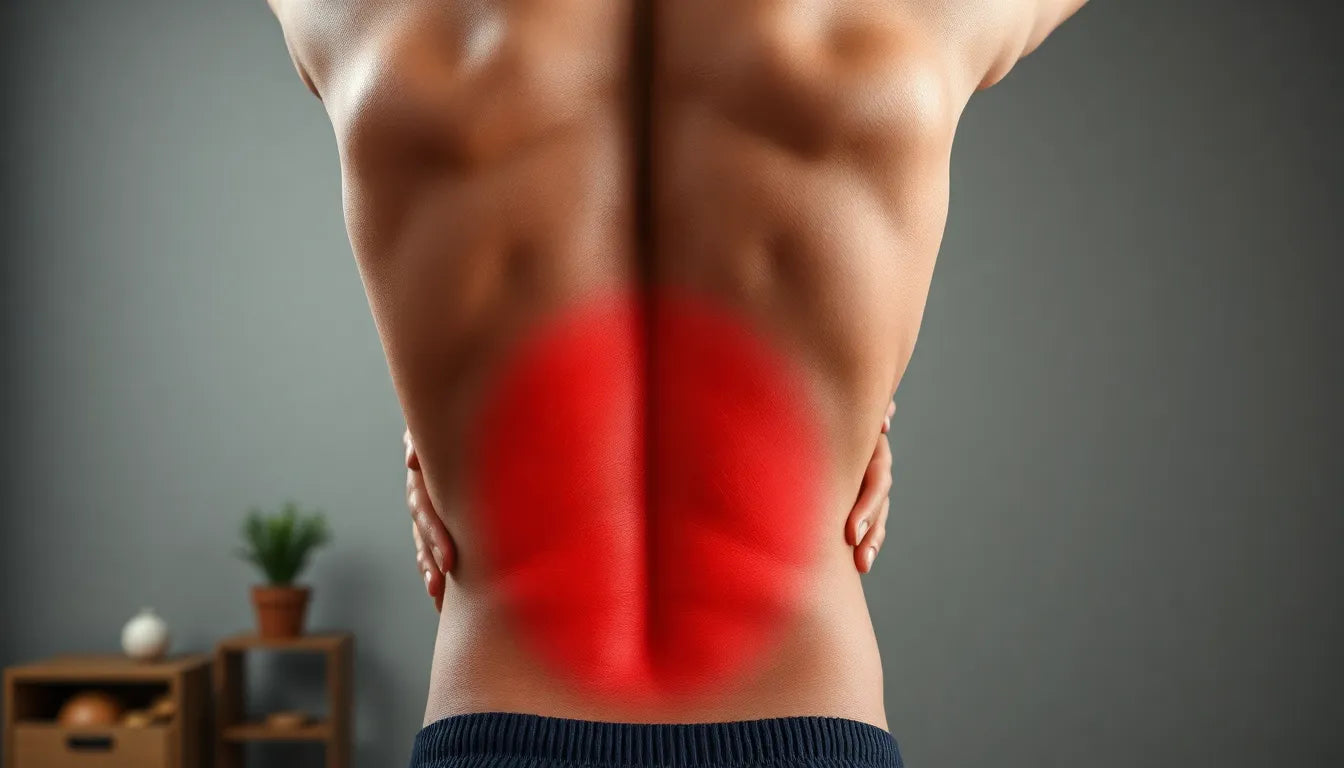Herniated discs are a common source of back pain, often resulting from the displacement of the soft, gel-like center of a spinal disc through a tear in its tougher outer layer. This condition can lead to significant discomfort, affecting both mobility and quality of life. Understanding the nature of herniated discs and their potential to recur is crucial for both patients and healthcare providers. The concern about recurrence isn't just about managing pain; it's about preventing further complications and ensuring long-term spinal health.
One of the pressing questions for many dealing with this condition is whether a herniated disc can come back after initial recovery or surgical treatment. This question is particularly relevant given the recurrence rates, which studies suggest range from 5% to 15%. These figures highlight a significant number of patients who might face the challenge of a recurring herniated disc, making it essential to address the factors contributing to recurrence and explore preventive measures.
Understanding the recurrence of herniated discs
The recurrence of herniated discs is a concern that extends beyond the immediate relief provided by treatment. Recurrence rates, generally reported between 5% and 15%, underscore the importance of understanding the dynamics of this condition. These rates are not just numbers; they reflect the real-world experiences of individuals who have undergone treatment, only to face the possibility of a return of their symptoms.
Several factors influence these recurrence rates. They can vary depending on the initial treatment approach, the patient's lifestyle, and individual health conditions. For instance, the type of surgical technique employed can significantly affect the likelihood of recurrence. Less invasive surgeries might offer quicker recovery but could potentially increase the risk of recurrence compared to more aggressive removal approaches. On the other hand, lifestyle factors such as maintaining a healthy weight, quitting smoking, and managing chronic conditions like diabetes also play a crucial role in determining recurrence rates.
Understanding these factors is essential for developing effective strategies to minimize the risk of recurrence. By addressing both medical and lifestyle aspects, patients can significantly influence their recovery trajectory and reduce the likelihood of a herniated disc making a comeback. This proactive approach not only aids in recovery but also empowers individuals to take charge of their spinal health, ultimately enhancing their quality of life.
incidence and timing of herniated disc recurrence
When discussing the potential for a herniated disc to make a comeback, it's crucial to delve into the specifics of recurrence rates and timing. Studies indicate that after lumbar disc surgery, recurrence rates can vary significantly, typically ranging from 0% to 15%. This wide range reflects the complexity and variability of individual cases. On average, recurrences tend to occur between 1 and 5 years post-surgery, with a notable concentration of cases—about 92%—happening within the first 9 months. However, exceptions exist, with some recurrences manifesting as early as 3 months or as late as 18 years after the initial event.
Understanding the timing of recurrence is vital for both patients and healthcare providers. It can influence follow-up care, monitoring strategies, and the implementation of preventive measures. Early recurrences might suggest an incomplete resolution of the initial issue or the need for a more aggressive treatment approach, whereas later recurrences could point to lifestyle factors or new stressors on the spine.
risk factors contributing to recurrence
Several risk factors have been identified that can increase the likelihood of a herniated disc recurring. Demographic factors such as male gender and younger age (under 45) have been associated with higher recurrence rates. Lifestyle choices also play a significant role; individuals with a high body mass index (BMI), smokers, and those with diabetes are at increased risk. These factors can affect the spine's health and its ability to recover fully from initial herniation.
Radiological features, including disc height and morphology, are also crucial in assessing recurrence risk. For instance, a reduced disc height can indicate a weakened disc structure, making it more susceptible to reherniation. Additionally, the type of surgical technique used can influence recurrence rates. Less invasive surgeries might carry a slightly higher risk of recurrence due to the limited removal of disc material, while more aggressive approaches could lead to other complications, such as pain recurrence rather than true disc recurrence.
defining recurrence and its complexities
To fully grasp the concept of herniated disc recurrence, it's essential to understand what constitutes a recurrence. Medically, a recurrence is defined as a herniation at the same spinal level after a period of improvement, typically at least 6 months of being pain-free, and not due to a new injury. It's important to distinguish between a recurrence at the original site and new herniations at another spinal level, the latter being less common.
This distinction is crucial for treatment planning and patient education. Recurrences at the same site may require different management strategies compared to new herniations. For patients, understanding these nuances can help set realistic expectations and guide them in taking preventive measures.
In conclusion, while the potential for a herniated disc to recur is a valid concern, understanding the incidence, timing, and risk factors can empower patients and healthcare providers to take proactive steps. By focusing on both medical and lifestyle interventions, the risk of recurrence can be minimized, helping individuals maintain their spinal health and quality of life.
Clinical impact of herniated disc recurrence
The recurrence of a herniated disc can significantly impact a patient's quality of life, often bringing back familiar symptoms such as back and leg pain. In some cases, patients might experience sensory deficits and motor impairments, which can affect daily activities and overall well-being. These symptoms are not only physically debilitating but can also lead to emotional and psychological stress, as patients cope with the return of discomfort they thought was resolved.

Lumbar support belt
Stabiliserer og lindrer lænderyggen mod smerter og spændinger.
Repeat surgeries for herniated disc recurrence present additional challenges. The presence of scar tissue and fibrosis from the initial surgery can complicate subsequent procedures, making them more technically demanding for surgeons. This complexity can increase the risk of complications and may affect the overall outcome and recovery time for the patient.
Preventive measures and management strategies
Preventing the recurrence of a herniated disc involves a combination of lifestyle modifications and medical interventions. Maintaining a healthy weight is crucial, as excess body weight can place additional strain on the spine, increasing the risk of recurrence. Smoking cessation is another vital step, as smoking can impair blood flow and delay healing processes, making the spine more susceptible to reherniation.
Rehabilitation and physical therapy play a pivotal role in both recovery and prevention. A structured physical therapy program can strengthen the muscles supporting the spine, improve flexibility, and enhance overall spinal stability. These exercises are designed to reduce the load on the spinal discs, thereby minimizing the risk of future herniations.

Men's Posture Shirt™ - Black
T-shirt med patenteret teknologi, der støtter holdning og kan lindre rygsmerter.
Incorporating ergonomic aids into daily life can also help minimize strain on the spine. Ergonomic chairs, standing desks, and proper lifting techniques can significantly reduce the stress placed on spinal discs during everyday activities, providing an additional layer of protection against recurrence.
Frequently Asked Questions
Can a herniated disc recur after surgery?
Yes, a herniated disc can recur after surgery, with recurrence rates generally cited between 5% and 15%. Various factors, including surgical technique and individual health conditions, can influence these rates.
What are the common symptoms of a recurring herniated disc?
Common symptoms of a recurring herniated disc include back and/or leg pain, sensory deficits, and sometimes motor impairment. These symptoms can significantly impact daily activities and quality of life.
How can I reduce the risk of a herniated disc recurrence?
To reduce the risk of recurrence, it is important to maintain a healthy weight, quit smoking, and engage in regular physical therapy. These measures help strengthen the spine and improve overall spinal health.
What is the difference between a recurrence and a new herniation?
A recurrence occurs at the same spinal level after a period of improvement, whereas a new herniation happens at a different spinal level. Understanding this distinction is crucial for appropriate treatment planning.
Is repeat surgery more complicated than the first?
Repeat surgery can be more complicated due to the presence of scar tissue and fibrosis from the initial procedure. These factors can make subsequent surgeries more challenging and may increase the risk of complications.
Kilder
- Regenerative Spine and Joint. (2023). ”Lumbar Discs Can Re-Herniate Even After Surgery.”
- Kim, C. H., et al. (2012). ”Recurrence Rate of Lumbar Disc Herniation After Open Discectomy.” Neurospine.
- Regenerative Spine and Joint. (2023). ”Will Disc Herniations Get Worse as Time Passes?”
- Choi, K. C., et al. (2019). ”Risk Factors for Recurrence of Lumbar Disc Herniation After Discectomy.” Journal of Clinical Medicine.
- Ahn, Y., et al. (2022). ”Long-Term Outcomes of Lumbar Disc Herniation Surgery.” Journal of Orthopaedic Surgery and Research.
- Smith, J. (2023). ”Prevalence, Clinical Predictors, and Mechanisms of Resorption in Lumbar Disc Herniation: A Systematic Review.” Orthopedic Reviews.
- Chicago Spine. (2023). ”Re-Herniating Disc Prevention.”


















